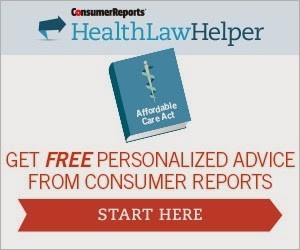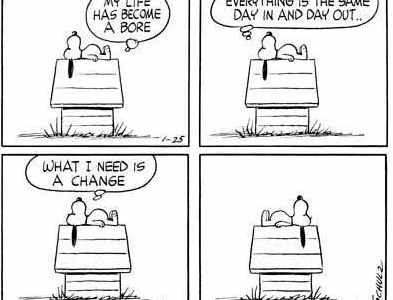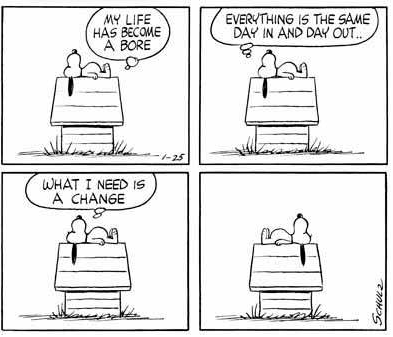Jes Sofia Says…: TLFoundation Orphanage Project: TLFoundation Orphanage Project By Jes Sofia Valle In Social Impact Located In Los Angeles, CA PEOPLE HELP PEOPLE in Guatemala. This Se…
Category: Health
TLFoundation Orphanage Project
In Social Impact Located In Los Angeles, CA
PEOPLE HELP PEOPLE in Guatemala. This September 2014 we hope to provide orphanages with Education and Mental Health, along with providing basic needs such as Milk, Diapers & other necessities. We are going to Guatemala!! Help us out! or Join us!! I’m Jes, with one S, like Yes in Spanish. I ‘m a child Therapist and Child Advocate. I’m looking to be able to help orphans and their homes. I will tell you how this all started.
WHILE ON MY TRIP TO GUATEMALA, I had the urge to help someone other than myself. I felt that I should be doing more than just spa-hopping, so with just one day left on my rental car. I put my mind to what wanted to accomplish. Really, it was instinctual – I wanted to give to kids. Anyone that knows me already can vouch for how much I love helping kids, so I went to a few bigwig companies to ask for help. After a few weeks of waiting some companies said no, but others said yes. I sat down in one of two Starbucks locations in Guatemala, and talked to my friend on Skype. When I was done with my conversation, a man approached me and in English (mind you, was conversing in English on Skype, in a part of the world where all you hear is Spanish), and he said, “I was eavesdropping and overheard you wanted to help an orphanage.” I said, “Yes!” and he introduced himself as Mike and said he was a director of a team in Guatemala who works with local orphanages — talk about heaven sent! “We provide food for them,” Mike shared, and from I immediately was completely amazed and inspired by the get-go. He told me about his organization, Orphaned Resources International, and through the conversation, I was able to link him to various sources of mine. And I told him I was interested in helping an orphanage dedicated to babies and toddlers and he gave me three choices to choose from.
I ultimately chose Hogar de Ninos, Amor de Patricia. I ran to a store, which had already agreed to help in my quest, and a representative from Huggies also happened to be there, too. I asked them for diapers, and was able to fill my car with Huggies, milk, baby formula, toys and bottles. They gave me so much for the kiddos, in addition to what I purchased myself that I ended up with so much more than what I expected to end up with. After about an hour drive, When I went inside, my heart was filled with so much emotion; I wanted to adopt all of them! I wanted to take them home and work my butt off to give them a life outside those orphanage walls. But I knew that I could not give them all the lives they deserve all by myself, which is why I’m asking YOU and brands to help Guatemalan orphanages with a donation to help the orphanage hire teachers and a psychologist. we will provide basic needs such as Milk for the babies and kids, diapers, and clothes. This time I cannot buy all the things I would like to give them, and I would also like to help more than one orphanage.
So can you help me?
Ways You Can Help:
Donate to buy: Milk, Diapers, Clothes, and Toys
Donate airfare to help us give.
Donate to Hire Teacher and Psychologist ($600 Monthly)
PLEASE help SHARE this through Social Media! FACEBOOK/TWITTER/INSTAGRAM/ ANY SOCIAL MEDIA OUTLETS! Trust us, it helps!
Thank you! Jes and Team
Three reasons / Tres Razones
Three reasons / Tres Razones
There are three major reasons why you SHOULD get Insurance:
- You don’t want to be in a situation where you have to go to the doctors (knock on wood) and then you find out you have something more than just a headache.
- You don’t want to use up all your money (one scan can cost up to 1K) and then not be able to continue to find out what else is wrong and declare bankruptcy because you have so many bills to pay.
- You deserve to have insurance! Why don’t you have it already? Why are others reaping the benefit of talking to their doctors, working on their health and you are not?
Hay tres razones principales por qué necesitas seguro:
- No quieres estar en una situación donde tienes que ir a los médicos (golpee la madera) y te das cuenta tienes algo más que un dolor de cabeza.
- No quieres usar todo su dinero (una exploración puede costar hasta 1K) y luego no ser capaz de continuar a ver qué pasa y declararse en bancarrota porque tienes muchas cuentas que pagar.
- Te mereces tener seguro! ¿Por qué no lo tienes ya? ¿Por qué otros están cosechando los beneficios de hablar con sus médicos, que trabajan en su salud y no estás?
HOW? ¿Como? ……
HealthLawHelper is an informational tool designed for individual consumers. It incorporates the best information Consumer Reports has about the federal healthcare law’s impact on consumers. Though enrollment has picked up, millions of Americans are still not aware of their options under the new law. The HealthLawHelper bridges this knowledge gap and helps connect consumers with their new options or puts their mind to ease about how the law actually may or may not affect them.
The tool works for any scenario and it gives you options. In many cases, the tool will direct the user to their state marketplace for new coverage options. But for example, if you already have Medicare coverage or coverage through an employer, the tool helps you understand how your current situation fits in to law.
Spanish:
AseguraTuSalud es una herramienta informativa para los consumidores individuales. Incorpora la mejor información que tiene Consumer Reports sobre el impacto que tiene la ley federal de cuidados de salud en los consumidores. Aunque las inscripciones han aumentado, millones de estadounidenses todavía no están conscientes de las opciones que tienen con la nueva ley. AseguraTuSalud cierra esta brecha de conocimiento y ayuda a conectar a los consumidores con sus nuevas opciones o los tranquiliza sobre cómo la ley realmente funciona o cómo les puede afectar.
La herramienta funciona para cualquier escenario y te brinda tus opciones. En muchos casos, la herramienta dirige el usuario al Mercado de Seguros Médicos de su estado para que vean sus nuevas opciones de cobertura. Pero, por ejemplo, si tú ya tienes cobertura de Medicare o cobertura a través de un empleador, la herramienta te ayuda a entender cómo tu situación se ajusta o no a la ley.
Mental Health Month
Thursday, May 1
“Speak Up for Kids” #ISpeakUp Selfie Project
APA is partnering with the Child Mind Institute for the third year of the “Speak Up for Kids” campaign. APA staff and the association’s followers on Twitter and Facebook will be encouraged to take pictures of themselves holding a sign (PDF, 163KB) completing the sentence “I speak up because…” with why they care about children’s mental health. Supporters can share their photos on their own personal networks using the #ISpeakUp hashtag. APA followers’ messages will be shared on APA social networks throughout the month of May.
Sunday, May 4
“How to Tell When a Kid is Struggling” Webinar, 7-8 p.m. (EDT)
APA and the National Parent Teacher Association (PTA) are hosting a webinar for PTA members entitled “How to Tell When a Kid is Struggling Emotionally.” APA Executive Director for Professional Practice Katherine Nordal, PhD, will open the discussion. Rockville, Md.-based clinical psychologist Mary Alvord, PhD, will talk with parents, educators and youth-serving professionals about how to recognize when a youth is struggling and what to do when you know a child or teen needs help.
Tuesday, May 13
Finding Answers #EquityChat, 2-3 p.m. (EDT)
APA will co-host a Twitter #EquityChat on health disparities affecting boys and men in partnership with the Robert Wood Johnson Foundation’s Finding Answers initiative. Wizdom Powell, PhD, an APA member and expert on African-American men’s mental health, will lead the discussion. Powell is chair of the APA Working Group on Health Disparities in Boys and Men.
Wednesday, May 14
Blogging for Mental Health
Psychologists writing for APA’s public education blog, Your Mind, Your Body, invite people to share their stories related to mental health and emotional wellness.
Thursday, May 15
Community Forum on Substance Abuse and Mental Health, Chicago School of Professional Psychology, 901 15th St., NW, Washington, D.C., 5:30-7:30 p.m. (EDT)
The APA Office of Ethnic Minority Affairs will sponsor a community forum through its Ethnicity and Health in America Series to raise awareness about the physiological impact of substance abuse and addiction among Asian-Americans and Pacific Islanders. Hosted in partnership with the Chicago Professional School of Psychology, the D.C. Mayor’s Office on Asian and Pacific Islander Affairs, the National Asian Pacific American Families Against Substance Abuse and faculty members from nearby institutions, the event will focus on mental health, substance abuse/addiction and barriers to treatment.
Wednesday, May 21
Mind the Gap: Integrating Physical & Mental Health Care, Museum of Science and Industry, 5700 Lake Shore Dr., Chicago, 3-5 p.m. (CDT)
Panelists will discuss improving mental health care for youth and families, benefits of collaborative care for mental and physical health and actions to address the challenges of integrated care. APA member Cathy Mavrolas, PhD, chief psychologist and director of training in psychology, LaRabida Children’s Hospital in Chicago, will be among the panelists. The Child Mind Institute is sponsor of the event.
The American Psychological Association, in Washington, D.C., is the largest scientific and professional organization representing psychology in the United States. APA’s membership includes nearly 130,000 researchers, educators, clinicians, consultants and students. Through its divisions in 54 subfields of psychology and affiliations with 60 state, territorial and Canadian provincial associations, APA works to advance the creation, communication and application of psychological knowledge to benefit society and improve people’s lives.
3 why’s? / ¿3 porqués? #Aseguratusalud
1. You love your health. With out your health, you are ill, and being ill can take time to heal and meds… and finding out what makes you ill… to be able to heal. 🙂
2. You deserve it. WHY NOT?
3. You can obtain all sorts of services! Medical, Mental… find out what! and “Being a Woman” is no long is a “MEDICAL Condition.”
HealthLawHelper is an informational tool designed for individual consumers. It incorporates the best information Consumer Reports has about the federal healthcare law’s impact on consumers. Though enrollment has picked up, millions of Americans are still not aware of their options under the new law. The HealthLawHelper bridges this knowledge gap and helps connect consumers with their new options or puts their mind to ease about how the law actually may or may not affect them.
STRESSED because they are because they are Poor? Or poor because they are stressed?
By Brandale D. Randolph
THERE ARE TWO SCHOOLS OF THOUGHT ON THE LINK
BETWEEN POVERTY AND CHRONIC STRESS.
While both have are based on elements of research based facts, neither on there are conducive towards efforts to reducing the effects of poverty on our society. To some the debate about whether chronic stress causes poverty or poverty causes chronic stress is as rhetorical as the one about the chicken and the egg. However, just as Neil deGrasse Tyson infamously laid waste to that debate by stating that the egg came first but it was laid by something that was not a chicken, I will attempt to do so to this debate.
On one hand, if one believes that poverty causes stress, they may also inversely believe that not being poor will end the stress, then the solution will be aimed at the poverty, not the stress. Thus, is one believes that poverty is simply financially related, the efforts may be geared towards making those in poverty richer.
If one believes that poverty is simply a mindset they may be aimed at changing the way that the people whom are in poverty think about the stress they are under. Both fail because the focus is primarily on the individual and not their environment or the set of circumstances that may surround them. The logical flaw is exposed in the asking of one single question, if one were to rid a person of their ‘poverty’ but leave them in the same environment would that alleviate the stress?
Maybe, for a select few, but for many, no, the stress would simply return in another form. Therefore, the environment must also change. On the other hand, if one believes that stress causes poverty, they may also believe that the reduction of stress would help reduce the effects of poverty on the individual. Therefore the primary focus becomes on the stress and not on the individual themselves.
But that leads to other questions how is this stress being defined? Is this stress internal? It could be, it researched and proven that people who live in poverty often suffer from lower feelings of self-worth and personal value, which often then leads to self-destructive behavior. Or is it external? People who live in poverty are more prone to violent crime, food insecurity, homelessness and other health issues.
As in the other situation, the flaw lies in a single question; if you were to change the environment and alleviate many of the stress placed on people in poverty would this help alleviate their poverty? In most cases, if changing one’s environment does not always lead to changing that person themselves. In this case the stressful environment may be altered but the poverty may remain. Therefore, the individual in poverty must change in accordance with his environment.
So let’s go back to the original question does stress cause poverty or does poverty cause stress? The answer is simply that while poverty and stress do go hand in hand, the origin of stress and poverty lie, outside of each other and not within.
Stress is based on our personal perception of our environment and experiences. Two people can endure the same experience; however one may see the experience as a life or death scenario, while the other may not feel that the experience is any threat at all to their existence. Thus, the stress felt by both individuals will be different. While it may have some influence, personal income does not dictate we view our experiences. It may increase the possibility for more positive experiences but there is not guarantee that a richer person will interpret a stressful environment any different from a poorer person.
Part of the answer, is understanding that it is our personal experiences that give us the lens from which we view life. The other part of the answer is in understanding that poverty exists based on greed, not income or a mindset. Poverty exits because in a world of limited valuable financial resources, poverty occurs because one set of humans, have placed a lesser value on the labor, resources and culture of another set of humans.
This is done out of greed and simply for maximized profit. In much the same way that the greatest Kings used slave labor, our wealthiest corporations pay minimum wages. Poverty is based on this, not on stress. Stress does not create poverty, greed does. Therefore long as there is greed, there will be poverty. The remaining part of the answer lies in understanding that the solution to poverty is never within the effects of poverty but outside it among environments where the effects of poverty do not exist.
So in combining the two, the answer to the question of whether poverty causes stress or is stress causes poverty, lies in its own ‘mutant chicken’, greed. Because greed was the culturally accepted solution to the stress that some humans had in the desire to be valued above other groups of humans, poverty was created and because of the existence of institution that further that poverty, the greedy are shielded from the stress that poverty causes. While these institutions are then seen by the poor as solutions to their stress, they were established ultimately to preserve the wealth of the greedy.
Brandale D. Randolph is a blogger, advocate and author of “Me & My
Broke Neighbor: The 7 Things I Learned About Success Just By Living
Next To Him…” and the forthcoming book “The Giant Sinkhole Called
Poverty” due Spring 2013. He also co-founder and executive director
of Project: Poverty, a non-profit organization that seeks permanent
solutions to the effects of poverty on our society. He is a guest
lecturer and public speaker on issues related to poverty. For booking
information more info go to https://about.me/brandaledrandolph or at
brandale.randolph@projectpovertyonline.org.
3 Simple Ways to Eat for Wellness
by Christy Wilson, RD
IN OUR WORLD OF FAST COMPUTERS,
fast acting medications and fast food, eating well has less to do with speed and more to do with taking time to be mindful about you’re choosing to eat.
Although health claims like “fat free”, “low calorie” and “sugar free” may seem like a short cut to choosing healthy foods at the grocery store, foods that come without labels that make the best foundation for a healthy diet.
- PLANT OVER ANIMAL. One of the simplest ways to eat a healthy balance of foods is to take a divide-and-conquer approach with your plate. The 2010 Dietary Guidelines for Americans came with a model of a plate (ChooseMyPlate.gov ) divided into four sections (plus an outlying section for dairy). The most important message is filling half the plate with fruits and vegetables compared with less than a quarter of the plate with meats or other animal protein. With less meat, your meal is guaranteed to have more heart healthy fiber, less cholesterol (plants don’t have any) and saturated fat (found mostly in meats). High-meat diets (especially processed meats like lunch meats and hot dogs) are associated with higher rates of cancer and heart disease.
- LIMIT LIQUID CALORIES. At 140 calories or more per serving, sodas, juices, sweetened teas and coffee drinks deliver pure liquid sugar that isn’t as filling as solid food. Are sugar-free alternatives better? Not according to recent studies that link some artificial sweeteners (like NutraSweet) to weight gain. The heightened sweetness of sugar substitutes can pacify a sweet tooth without squashing the temptation to eat foods like cake, cookies and pie. Cut your sugar craving by drinking mostly water and add slices of orange or lemon for added flavor.
- GO WITH WHOLE GRAINS. Eating whole grains like wheat, bran, oats and barley are excellent ways to boost your fiber intake that can keep you feeling full longer and reduce your risk of heart disease, stroke and cancer. When shopping for foods like bread, tortillas, pasta and cereal, make sure the first ingredient on the label reads “whole grain.” Anything else indicates you’re getting a refined, processed version of the grain. Whole grains like oatmeal, whole-wheat pastas and brown rice are also a naturally a good source of B-vitamins, magnesium and vitamin E.
Christy Wilson is a Registered Dietitian, a freelance health writer and speaker. Check out her web site and blog, www.christywilsonnutrition.com and follow her healthy eating tips on Twitter @christyschomp. She currently resides in Tucson, AZ with her husband and two young children.
#Recovery after #Surgery
It is hard to go through a surgery. It is like learning another language. It can be easy and difficult. But all depends on you. The way you see things, the way you interact with the people who are there to help you advance while you recover.
10. Listen to your doctors.
Smile (if you want to…)
Jes Sofia
#Adjust to #Change
We are creatures that Move. We move home, apartments, cities, jobs, states, we drive too much and we sit too much too. So what do we do when our “routine” has changed?
Here are some tips to help you Adjust to your new ways.
1. Look for the things you like in your new surrounding area. They may not have your favorite things, but they may have something better. Remember its how you perceive things. If you like your shrimp and veggies, find a place that gives you shrimp and veggies. If you like Trader Joes, then look for a Trader Joes. Don’t be afraid to try out new things too… part of change is experiencing what you didn’t have before and now you do.
2. Make sure you know where the police station around your new surrounding is at. Safety is always important. Know the hospitals etc. God forbid you need to go one, but its always good to know “just in case.”
3. Take pics of your surroundings. I’m not saying post them on Facebook or Instagram. I’m saying, learn to love where you are around. Find the details that allow you to look for, search the beauty of where you are at. I’ve learned to look at nature. AND I love pictures so it goes hand in hand.
4. Let people who you trust know where you are at. This way, just in case you go off the rid… you have someone know where you are at (Again, safety).
5. Traffic. I know here in Los Angeles (where I’m from) we have traffic at various hours of the day, and other times, we don’t. It all depends on where you are at and where you want to go. use traffic finders to seek what routs would allow you to get to your daily and “normal” routs faster and more efficiently. The last thing you want to do is stay in traffic after a hard days work and you come home to your new place and start to hate it because of it… Oooo child!
6. Enjoy your new change. Accept the fact that you are growing, allowing change in your life and being at one with you and yours.
7. Sit in your new place and allow the good vibes to come on in.
8. Drink water. And DECORATE it pretty to your liking (if you want).
9. Relax as much as possible.
10. Smile.
Hope this helps some.
I talk from experience.
Smile (if you want to).
Fitness For Busy Professionals
By Helen Troncoso
RENEW. REFOCUS. REINVENT.
Let’s face it, not everyone has a few hours everyday to spend at the gym. To top it off, our obesity epidemic continues to rise despite the increasing number of gyms available each year. Lucky for you, fitness doesn’t only happen at the gym. Here are three tips to get healthy and fit for even the busiest professional. Thirty Minutes To A New You Anytime you can do less work, and still get great results is a deal in my book. A 2012 study published in the American Journal of Physiology found that thirty minutes of daily exercise is just as effective for losing weight as sixty minutes. Get in there, and get it done! If you can read a magazine, text or play on Facebook while exercising, all you’re doing is wasting your precious time. Look for exercise plans that combine interval training, strength training, core exercises and stretching. Don’t forget to mix it up so you’re body doesn’t get used to a particular routine. If you’re strength training, change your routine every two weeks. Like to run? Add in some crosstraining and circuits to see a boost in your running time and performance. The best thing you can do is to be consistent, and emphasize quality over quantity.
Schedule your success
In a perfect world we would have all the time in the day to exercise. Then reality hits and you need to get the kids out the door, and fix yourself so you’re not doing your makeup while driving, once again. Schedule the time to workout. Lay out your clothes the night before. As a matter of fact, sleep in your gym clothes if it will help strike one more excuse why you can’t workout. You don’t need to plan a routine that’s overly complicated, but you also don’t want to “wing it” either. Go for something in-between. Write out short term and long-term goals so you know if you’re progressing or not. Use technology to help keep you on track and in shape. Apps like MyFitnessPal, GymPact, Nexercise and Nike Training Club are just some of the great tools you can use to save time and automate your schedule..
Never neglect nutrition
Here’s the thing, you can never, ever out train a bad diet. Eating well is often the difference between success and failure. Especially if you have one of those super busy days where you absolutely can’t do a quick workout. Think about it, this is the only body you’re going to have, so why not treat it well? Feed it food that will help you power through any boardroom meeting, and especially while you’re catching up on those late night e-mail. A general rule of thumb is to skip the nonfat, low fat, too many ingredients you can’t even pronounce trap. Feed your body real food. Planning and prepping meals for you and your entire family is healthier, will save you money and give you more time to spend on yourself. If you don’t take care of your health, it will eventually catch up to you and you won’t be around to take care of that family you sacrifice so much for. Change your perspective on exercise, and find inspiration and motivation from everything around you. It will help to keep you on track especially when your mind is screaming at you all the reasons why you can’t do this. Matter of fact, stop thinking about all the things you can’t do, and make a true commitment to living a healthier and happier life today. Disclaimer: Always consult with your medical doctor before starting any rigorous workout, especially if you have a preexisting condition. Start off slow and build from there to help avoid burnout and injury.
Source:
- Rosenkilde, P. L. Auerbach, M. H. Reichkendler, T. Ploug, B. M. Stallknecht, A. Sjodin. Body fat loss and compensatory mechanisms in response to different doses of aerobic exercise – a randomized controlled trial in overweight sedentary males. AJP: Regulatory, Integrative and Comparative Physiology, 2012
Dr. Helen Troncoso is a Doctor of Physical Therapy, health expert and founder of Reinventing You, LLC where she helps busy people get healthy and fit. For more health and wellness tips, visit her website at: www.helentroncoso.com










